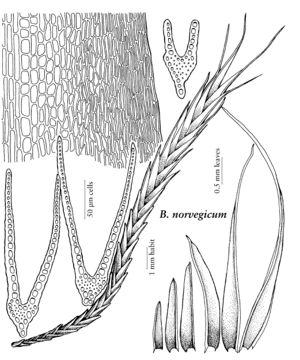Bryoxiphiaceae
Plants small. Stems unbranched or infrequently branched subapically, bulblike or not at proximal end, erect or pendent, loosely to densely tufted, rarely solitary; axillary hairs filiform, hyaline, or basal and adjacent cell pale tan or pale rose-violet; paraphyllia none; pseudoparaphyllia none; rhizoids basal, light-brown to reddish, smooth. Leaves distichous, tightly imbricate, changing little when dry, conduplicate; 1-costate, costae supporting low abaxial lamellae; laminal cells firm-walled, 1-stratose, smooth, somewhat bulging. Sexual condition dioicous; perigonia and perichaetia terminal, indistinct, without and with paraphyses, respectively, archegonia about 1/2 length of paraphyses; antheridia and archegonia few. Sporophytes single. Seta short, erect or somewhat curved. Capsule subglobose, emergent, erect or somewhat inclined, radially symmetric, stomatose; annulus absent; peristome absent; operculum persistent, obliquely rostellate, attached to columella after dehiscence. Calyptra cucullate. Spores spheric.
Distribution
North America, Mexico, West Indies, Europe, Asia
Discussion
Genus 1, species 2 (1 in the flora).
